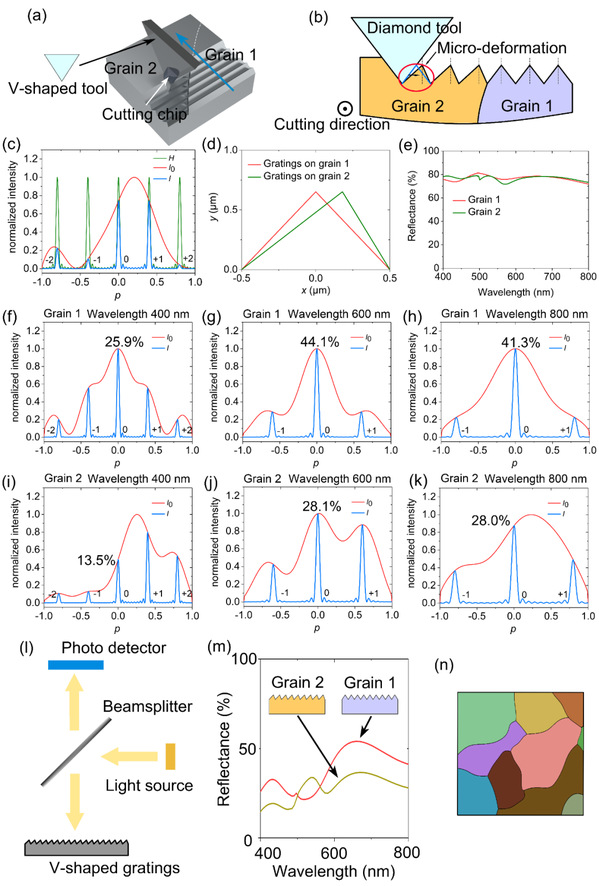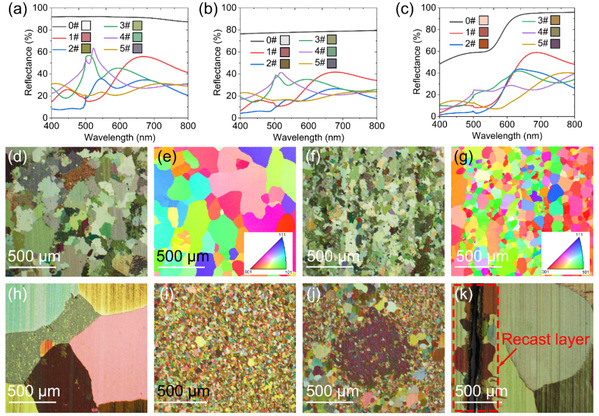News&Events
Research News
Research Breakthrough: Novel Metallographic Characterization Technique Developed by Prof. Zong Wenjun’s Team Published in Advanced Functional Materials
Recently, a research team led by Professor Zong Wenjun from the Center for Precision Engineering at Harbin Institute of Technology (HIT) proposed an innovative technique for microstructural characterization of polycrystalline metals by leveraging the anisotropic structural coloration effect induced by metal surface anisotropy. The study, titled Spatial Grain Orientation Induced Structural Coloration Anisotropy of the Micro V-Shaped Metal Arrays for Metallurgical Structure Characterizing, has been published in the prestigious journal Advanced Functional Materials. This interdisciplinary work bridges mechanical engineering, optics, and materials science, offering a highly efficient approach to metallographic analysis of metallic materials.
Key Innovations
The team introduced a grating-based structural coloration (GBSC) method, which utilizes ultra-precision machining of V-shaped micro-grooves to generate crystal-orientation-dependent anisotropic structural color effects for grain size and shape characterization. Through optical simulations and experimental validation, the researchers elucidated the underlying mechanism of anisotropic structural light formation.
The study revealed that when V-shaped microstructures are machined onto metal grains with different crystallographic orientations, the anisotropic mechanical properties of the grains induce directional micro-deformation, resulting in distinct surface micro topographies. Consequently, these microstructures exhibit unique far-field diffraction spectra, producing observable structural colors under an optical microscope.
The team systematically optimized key machining parameters—including cutting depth, tool angle, and grating period—to achieve superior structural coloration on polycrystalline aluminum. The method was further validated on polycrystalline tin and copper, successfully enabling high-efficiency grain structure labeling on various soft metal surfaces.
Advantages Over Conventional Methods
A notable advantage of this technique is that it eliminates the need for chemical etching. Instead, grains are naturally colored, allowing direct observation of grain size and morphology using only an optical microscope. Currently, the GBSC method requires just minutes to prepare millimeter-sized samples, with a grain resolution below 5 micrometers (μm). This positions it as a promising next-generation metallographic characterization tool.
Authorship and Funding
HIT is the sole affiliation of this research. Professor Zong Wenjun and young faculty member Associate professor Liu Hanzhong served as co-corresponding authors, with PhD candidate Wu Liqiang as the first author. PhD students Cui Zhipeng and Wu Bing contributed as co-authors. The study was supported by grants from the National Natural Science Foundation of China and other funding sources.
Graphic summary

Principle of grain structure characterization in metallic materials via GBSC method.

Experimental results of grain structure characterization using GBSC method.
Paper link: https://advanced.onlinelibrary.wiley.com/doi/10.1002/adfm.202419366

